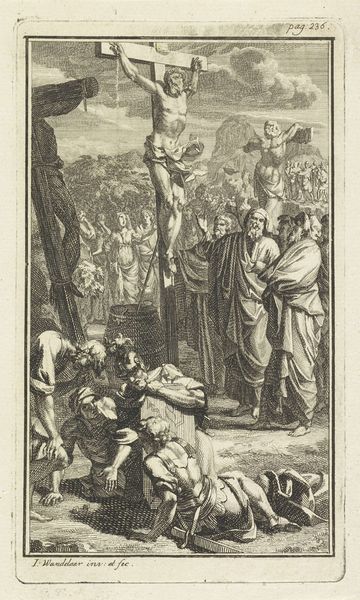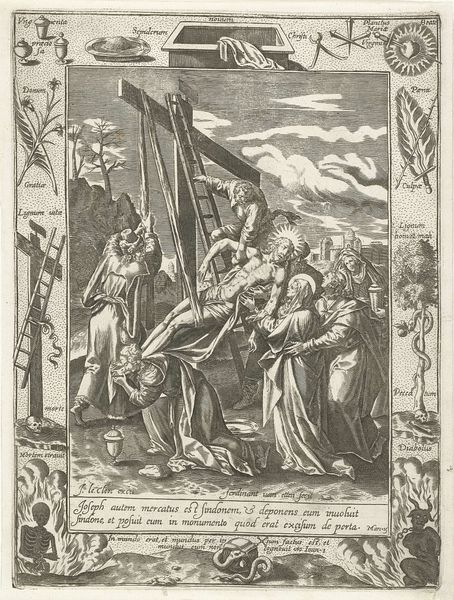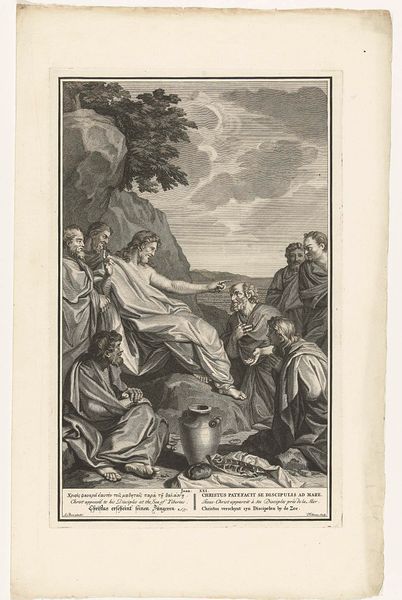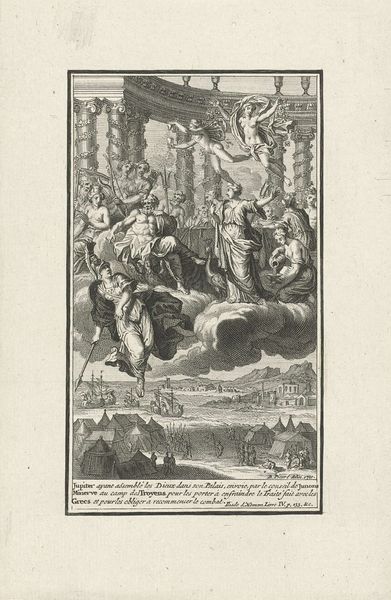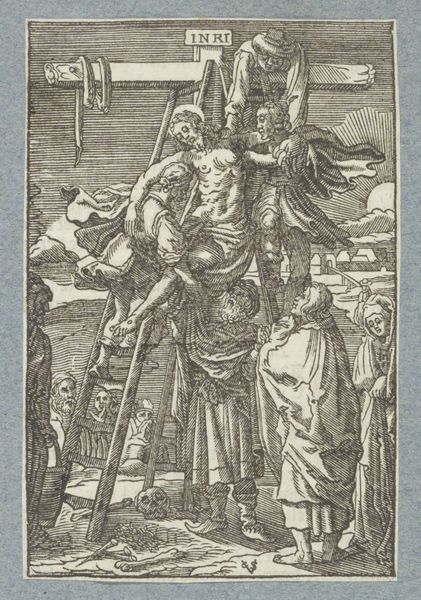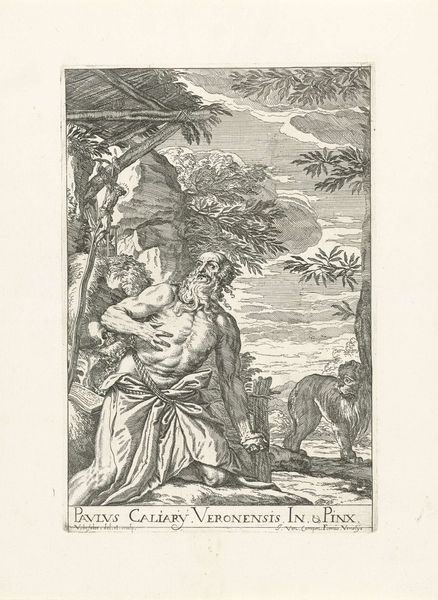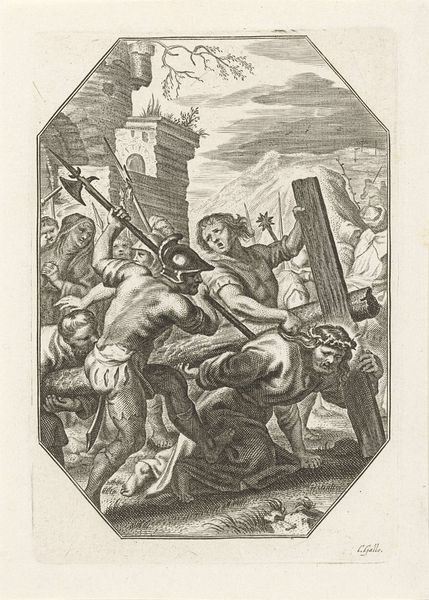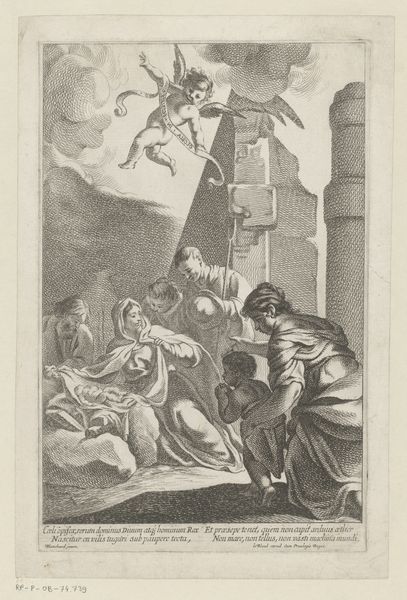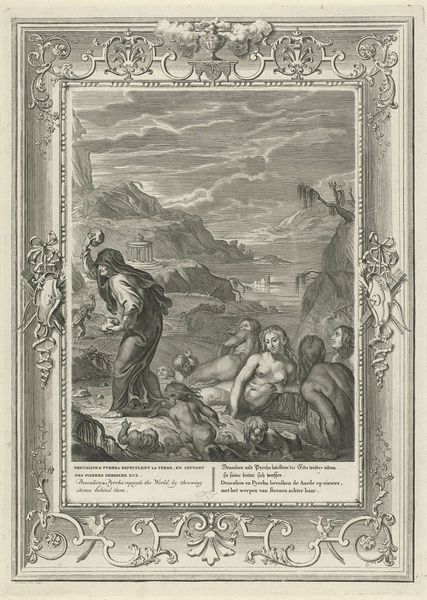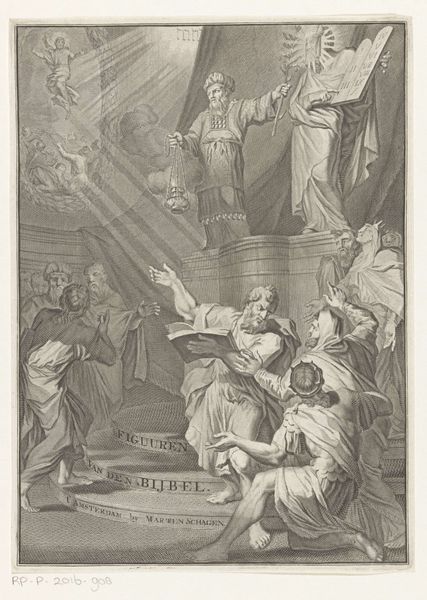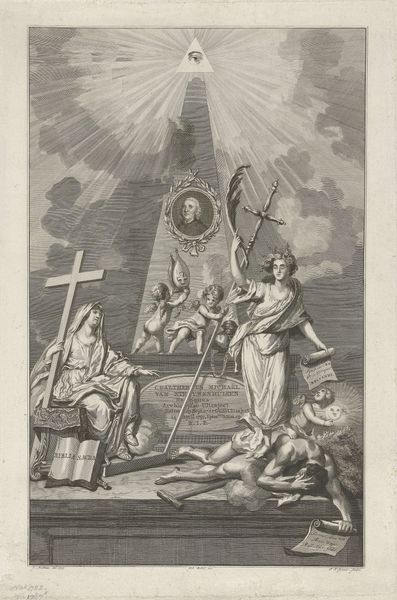
engraving
#
portrait
#
baroque
#
greek-and-roman-art
#
old engraving style
#
figuration
#
archive photography
#
old-timey
#
line
#
history-painting
#
engraving
Dimensions: height 190 mm, width 125 mm
Copyright: Rijks Museum: Open Domain
Curator: This engraving, made around 1710 by Bernard Picart, depicts "Achilles Mourning the Death of Patroclus". It's currently held in the collection of the Rijksmuseum. Editor: The raw grief in this image grabs you, doesn't it? Achilles looks utterly destroyed. You can almost hear his roar turned into a whimper. Curator: Absolutely. Picart captures a pivotal moment steeped in the cultural narrative of loss, war, and destiny from the epic poem "The Iliad". We see Thetis, Achilles' mother, a sea nymph, attempting to console her son after receiving news of Patroclus' death. It really sets the scene of the hero's profound emotional turmoil. Editor: He is devastated! Like the bottom just dropped out of his whole world. And her posture… It’s tender and assertive, but also almost resigned, isn’t it? It feels like she knows, on some level, she can't truly mend this wound. I mean, even the other figures seem to be at a loss; grief has kind of stunned them into inactivity. Curator: Right, the composition emphasizes Achilles' isolation in grief. The supporting characters create almost a theatrical tableau; but the engraving participates in a well-known visual trope depicting masculine sorrow. There's this very interesting tension. Achilles' despair isn't just personal; it’s operatic, meant to resonate within a specific social framework of mourning and heroic identity. Editor: The textures also speak to this idea. Despite its rather static medium, there's movement implied. The drapery, even the waves, push us back towards that initial overwhelming wave of grief and sets the tone. Even with everything, the composition directs you to those figures again and again. Curator: Picart really utilizes the medium of engraving, all these strong, sharp lines and classical motifs, to convey that powerful scene. This isn't simply an illustration; it’s an articulation of societal expectations around male grief and the enduring power of family ties within that framework. Editor: It also just showcases a real understanding of human emotion, especially with Thetis’s touch… her face is kind of obscured in grief also. So yeah, this isn’t just about Achilles the invincible warrior, but Achilles the man… the mourner. Curator: Precisely, this engraving isn't merely illustrative of "The Iliad." It functions as a historical artifact itself. It offers an entry point into the evolving social history behind how heroes, emotions, and familial bonds were visualized and understood in 18th-century Europe. Editor: Ultimately, a surprisingly sensitive rendering of anguish.
Comments
No comments
Be the first to comment and join the conversation on the ultimate creative platform.
